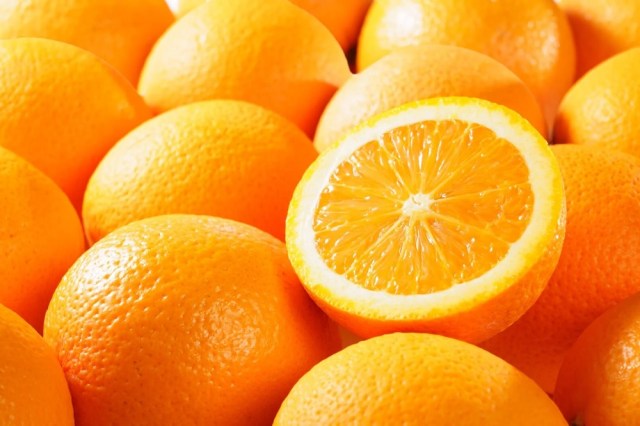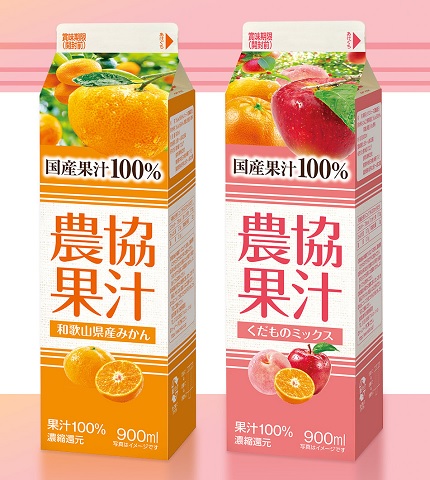
Multiple factors making orange juice hard to sell/buy in Japan.
Despite Japan’s well-deserved reputation a wonderland of delicious pleasures for the palate, the country isn’t immune to food/beverage crises. We’re only two years out from the potato shortage of 2022, when some fast food chains in Japan had to restrict French fry sales or replace their spuds with something else entirely, and who can forget the dark, dry days of Butter Crisis ’14 or Pizza Potato Crisis ’17?
Now Japan looks to be facing another shortage of something ordinarily available just about anywhere: orange juice.
In early April, Megmilk Snow Brand, the Japanese distributor for Dole juices, suspended sales of its Dole Orange 100% juice in 450-mililiter and one-liter cartons, leaving the less-then-half-pint 200-militer pack as the only remaining option. Then, on April 25, Morinaga Milk, Sunkist’s Japanese distributor, announced that it will be suspending sales of 200-mililter cartons of Sunkist 100% Orange once its current ingredient supply runs out.
So what’s causing this OJ shortage? Japan imports about 90 percent of its orange juice, with much of it made from fruit grown in Brazil, which suffered significant rain damage and a citrus disease outbreak in 2023. At the same time that supply is taking a hit, though, demand is rising in the post-pandemic world economy, leading to higher prices. Unfortunately, this is coinciding with the yen cratering in value versus foreign currencies. According to statistics released by the Japanese government’s Ministry of Finance in March, the in-yen price for importing orange juice has jumped 69 percent from a year ago, and has doubled since 2019, making it difficult for Japanese companies to import it in the current business climate.
When faced with high import-associated costs for a popular product, the simple solution would seem to be to just produce it domestically. That’s easier said than done, though. Japan’s small size and mountainous geography mean that farmable land isn’t so easy to come by, especially when other crops like rice, which is heavily subsidized, usually take precedence. What’s more, what citrus farming Japan does have is primarily focused on mikan (mandarin oranges), which are a popular staple food but not really well-suited for making juice, as mikan juice tends to be very syrupy compared to orange juice.
Around the same time as Japan’s orange juice distributors were announcing sales suspensions, the Japan Agricultural Cooperatives organization of regional co-ops revived its Nokyo Kajitsu brand of 100-percent fruit juices, which had been dormant for the last 14 years.
▼ Nokyo Kajitsu
However, both of the Nokyo Kajitsu varieties, which went on sale in April, use mikan juice, not orange juice, and so OJ fans in Japan may be in for tough, thirsty days ahead.
Source: Japan Agricultural News (1, 2) via Otakomu
Top image: Pakutaso
Insert images: Kyodo Milk Industry
● Want to hear about SoraNews24’s latest articles as soon as they’re published? Follow us on Facebook and Twitter!


 What’s on the all-you-can-drink menu at Denny’s Japan? 【Family Restaurant Drink Bar Showdown】
What’s on the all-you-can-drink menu at Denny’s Japan? 【Family Restaurant Drink Bar Showdown】 We try fresh orange juice squeezed for us by a vending machine in Saitama【Taste test】
We try fresh orange juice squeezed for us by a vending machine in Saitama【Taste test】 Mikan Gohan: Japanese soul food or…Japanese myth?
Mikan Gohan: Japanese soul food or…Japanese myth? Japan’s gorilla poo oranges are now in season, and being given away for free!
Japan’s gorilla poo oranges are now in season, and being given away for free! Mos Burger brings out a Mac and Cheese burger in Japan
Mos Burger brings out a Mac and Cheese burger in Japan How to order snacks on a Shinkansen bullet train in Japan
How to order snacks on a Shinkansen bullet train in Japan Burger King Japan suddenly adds Dr. Pepper and Dr. Pepper floats to its menu nationwide
Burger King Japan suddenly adds Dr. Pepper and Dr. Pepper floats to its menu nationwide Demon Slayer: Kimetsu no Yaiba gets new roller coaster attractions and food at Universal Studios Japan
Demon Slayer: Kimetsu no Yaiba gets new roller coaster attractions and food at Universal Studios Japan Japan’s new difficult-to-drink-from beer glass protects your liver, but it’s a brutal experience
Japan’s new difficult-to-drink-from beer glass protects your liver, but it’s a brutal experience Hello, cosmetics! Clinique teams up with Hello Kitty this summer for first-time collaboration
Hello, cosmetics! Clinique teams up with Hello Kitty this summer for first-time collaboration Nintendo history you can feel – Super NES, N64, and GameCube controllers become capsule toys
Nintendo history you can feel – Super NES, N64, and GameCube controllers become capsule toys Studio Ghibli releases Ponyo donburi bowl to bring anime ramen to life
Studio Ghibli releases Ponyo donburi bowl to bring anime ramen to life A visit to the best UFO catcher arcade in the universe!
A visit to the best UFO catcher arcade in the universe! New samurai glasses are Japan’s latest weird must-have souvenir
New samurai glasses are Japan’s latest weird must-have souvenir New Japanese banknotes selling online for up to 40 times original value
New Japanese banknotes selling online for up to 40 times original value “The most Delicious Cup Noodle in history” – Japan’s French Cup Noodle wins our heart【Taste test】
“The most Delicious Cup Noodle in history” – Japan’s French Cup Noodle wins our heart【Taste test】 Starbucks releases a cute Frappuccino and Unicorn Cake…but not in Japan
Starbucks releases a cute Frappuccino and Unicorn Cake…but not in Japan Kyoto Tower mascot termination reveals dark side behind cute Japanese characters
Kyoto Tower mascot termination reveals dark side behind cute Japanese characters McDonald’s Japan’s Soft Twist Tower: A phantom ice cream only sold at select branches
McDonald’s Japan’s Soft Twist Tower: A phantom ice cream only sold at select branches Yabai Ramen: What makes this Japanese ramen so dangerous?
Yabai Ramen: What makes this Japanese ramen so dangerous? Finally! Nintendo Japan expands Switch 8-bit controller sales to everybody, Online member or not
Finally! Nintendo Japan expands Switch 8-bit controller sales to everybody, Online member or not Japanese government wants to build luxury resorts in all national parks for foreign tourists
Japanese government wants to build luxury resorts in all national parks for foreign tourists To combat declining birth rate, Japan to begin offering “Breeding Visas” to foreigners
To combat declining birth rate, Japan to begin offering “Breeding Visas” to foreigners 10 things you should buy at 7-Eleven in Japan
10 things you should buy at 7-Eleven in Japan Studio Ghibli releases anime heroine cosplay dresses that are super comfy to wear
Studio Ghibli releases anime heroine cosplay dresses that are super comfy to wear Woman charged for driving suitcase without a license in Osaka
Woman charged for driving suitcase without a license in Osaka Studio Ghibli unveils My Neighbour Totoro miniature house model
Studio Ghibli unveils My Neighbour Totoro miniature house model Kyoto experiencing problems with foreign tourists not paying for bus fares, but not on purpose
Kyoto experiencing problems with foreign tourists not paying for bus fares, but not on purpose Fighting mild hunger with a Japanese soda that turns into jelly in the stomach【Taste test】
Fighting mild hunger with a Japanese soda that turns into jelly in the stomach【Taste test】 Studio Ghibli’s Howl’s Moving Castle tapestry unveiled in Japan for first time
Studio Ghibli’s Howl’s Moving Castle tapestry unveiled in Japan for first time McDonald’s new Happy Meals offer up cute and practical Sanrio lifestyle goods
McDonald’s new Happy Meals offer up cute and practical Sanrio lifestyle goods Sales of Japan’s most convenient train ticket/shopping payment cards suspended indefinitely
Sales of Japan’s most convenient train ticket/shopping payment cards suspended indefinitely Sold-out Studio Ghibli desktop humidifiers are back so Totoro can help you through the dry season
Sold-out Studio Ghibli desktop humidifiers are back so Totoro can help you through the dry season Japanese government to make first change to romanization spelling rules since the 1950s
Japanese government to make first change to romanization spelling rules since the 1950s Foreigner’s request for help in Tokyo makes us sad for the state of society
Foreigner’s request for help in Tokyo makes us sad for the state of society Ghibli founders Toshio Suzuki and Hayao Miyazaki contribute to Japanese whisky Totoro label design
Ghibli founders Toshio Suzuki and Hayao Miyazaki contribute to Japanese whisky Totoro label design Doraemon found buried at sea as scene from 1993 anime becomes real life【Photos】
Doraemon found buried at sea as scene from 1993 anime becomes real life【Photos】 Tokyo’s most famous Starbucks is closed
Tokyo’s most famous Starbucks is closed Princesses, fruits, and blacksmiths: Study reveals the 30 most unusual family names in Japan
Princesses, fruits, and blacksmiths: Study reveals the 30 most unusual family names in Japan Cat kotatsu let your feline friends relax through winter the Japanese way【Photos】
Cat kotatsu let your feline friends relax through winter the Japanese way【Photos】 Ensure your fruit never rolls away with pentagon oranges
Ensure your fruit never rolls away with pentagon oranges Mandarin orange peels aren’t trash, they’re treasure! Three chimpi tips to reuse your mikan skins
Mandarin orange peels aren’t trash, they’re treasure! Three chimpi tips to reuse your mikan skins Drinkable Hi-Chew coming to a Japanese convenience store near you!
Drinkable Hi-Chew coming to a Japanese convenience store near you! We try Oita Prefecture’s citrus-y creation in Starbucks Japan’s 47 Jimoto Frappuccinos
We try Oita Prefecture’s citrus-y creation in Starbucks Japan’s 47 Jimoto Frappuccinos Hash browns disappear from McDonald’s Japan branches as country’s potato shortage continues
Hash browns disappear from McDonald’s Japan branches as country’s potato shortage continues McDonald’s Japan to suspend sales of medium and large-size fries for one week
McDonald’s Japan to suspend sales of medium and large-size fries for one week Japanese vending machines now stock Pikachu drinks!
Japanese vending machines now stock Pikachu drinks! Pepsi’s new Japan Cola has a special ingredient: one of Japan’s most delicious sweets seasonings
Pepsi’s new Japan Cola has a special ingredient: one of Japan’s most delicious sweets seasonings McDonald’s Japan’s French fry rationing extended for about another month
McDonald’s Japan’s French fry rationing extended for about another month Shogun sweets? Trees said to be planted by first Tokugawa shogun still bear fruit used for sweets
Shogun sweets? Trees said to be planted by first Tokugawa shogun still bear fruit used for sweets Starbucks Japan adds a Motto Frappuccino to the menu for a limited time
Starbucks Japan adds a Motto Frappuccino to the menu for a limited time Starbucks Japan customisation hack: How to make the new Melon Frappuccino even more delicious
Starbucks Japan customisation hack: How to make the new Melon Frappuccino even more delicious Orange-flavored rice balls: Japan’s newest way to fuse vitamin C and carbs
Orange-flavored rice balls: Japan’s newest way to fuse vitamin C and carbs As McDonald’s Japan restricts French fry sales, rival boosts its fry sizes by 25 percent, for free
As McDonald’s Japan restricts French fry sales, rival boosts its fry sizes by 25 percent, for free “I Like Orange Juice!” Piko Taro releases new single that’s just as ridiculous as PPAP 【Video】
“I Like Orange Juice!” Piko Taro releases new single that’s just as ridiculous as PPAP 【Video】
Leave a Reply